






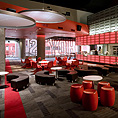
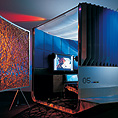
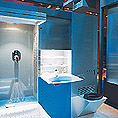
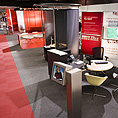

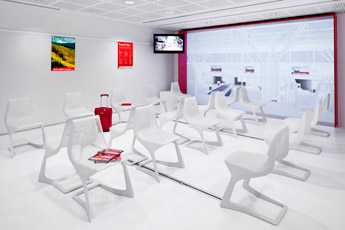
|
NAB User Experience Prototyping LabDesigning for user experience and innovationToday's customers want to be spoken to individually and they want products that not only perform but which reward them by being good to use. They are demanding products that reflect contemporary needs and desires and these are continuously evolving, giving rise to an ongoing refinement and change in the product offer. Today's customers want effective products and positive, memorable experiences. These are often enhanced or delivered by the intangible dimensions or attributes of the products, services and branding, often wrapped up in the design or the associated narratives that help situate the product or service within a broader cultural field. This has required companies to differentiate their offer and their products by competing on more than just price. The experiential dimensions of a product for the user can include the product interface, product support, interaction with sales staff and how satisfying the sales environment is. In a dynamic market where competition is fierce, innovation is a critical factor in achieving this required differentiation. Innovation comes broadly in two forms; tinkering with existing products to freshen them up, like a new coat of paint, a fresh application of make-up, or secondly, innovation can take the form of significant change, introducing entirely new ideas and products into the market, that challenge conventional practice. For companies deciding to innovate, great pressure is put on the development process, as the innovations must be accepted by users if the new products are to return on the investment of their development. This strategy courts the spectre of risk. |
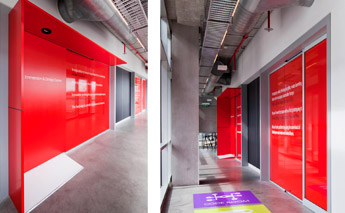
|
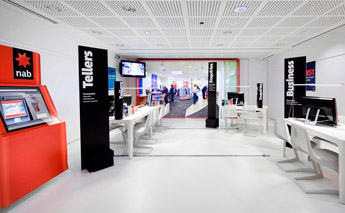
|
For architects and designers the challenge to create coherent user experiences, as part of design innovation, has translated into a new set of opportunities to craft design outcomes not as fixed forms or objects but as experiences, immersing the individual in a set of interconnected moments that become stories or memories to recount and trade. Contemporary advertising has moved to focus on extolling the attributes of the experience the product delivers, be it a car, perfume or washing powder. As selling products that satisfy basic needs is no longer a sufficient incentive for consumers to purchase one product over another, then understanding and shaping the desired customer experience has become the critical task for designers. The customer, not the product has become the focus of the design problem. This shift has given rise to the idea of an experience economy, where the real value of a transaction, what a product offers, is in the experiences attached to that product. For Le Corbusier, the great twentieth century architect, the problem of flight early in that century was the technology; the airplane and its function; how well it was designed as a machine. Today, for an airline the design problem is no longer the technology but that of building a brand and the experience of flying for passengers from one destination to another. The airline must offer an experience and a relationship for potential customers, offering one that is differentiated from other airlines even though all of the aircraft used by airlines are the same. The problem is not getting from A to B but what happens along the entire customer journey or experience path, before, after and during the flight. We have moved from the perfection of functional standards to creating a customer-unique service and proposition of value. Standardisation is no longer enough. In our contemporary identity-based culture every act of consumption becomes a signifier of our individual difference; our bodies, our personal relationships, our clothing and personal objects, our vacations and our cooking style. This individual focus makes the consumer the subject of each transaction as they seek to achieve a type of personal transformation. The consumer and the consumer's experience become the subject of the designer's problem. Brands like Nike have transformed their own focus on technical innovation into a challenge and platform for personal improvement, a physical transformation for every customer. In addressing this need to sell a transformative experience to customers, brands are building brand narratives to advertise their experiential offer and to create points of difference. |
|
To this end, in design practice, whether this is in architecture, service design or product design, designers are required to write the scripts that become the foundation of the actual brand experience or narrative. The services, products and spatial experiences we design act as the supporting props or sets within which the users experiences are addressed or unfold. This calls into play the idea of the role of the designer as a dramaturg. In theatre the dramaturg works on the dramatic script, acting as a critic, analyst, interpreter and advocate, researching the origins and relevance of the work and possible approaches to it. Within theatre practice the dramaturg's domain can extend to addressing the performing space and the theatrical institution, analysing and organising its goals and vision. This role identifies the importance of design as a process that helps to sculpt the resulting performance, and resulting audience experience, but also one that can be continually evaluated in relation the reading or translation that it brings to the 'source material' or script. When we apply this thinking to the world of commercial design we can think of the proposed design outcome as being constituted by three things: the software, being the script and narratives woven into the experience, the hardware, being the props, products and spaces where the action unfolds and finally the humanware or the staff or other actors, at all levels, who deliver the experience to the customer. |
page: 1 | 2 | 3 | 4 |
2008 © Crowd

